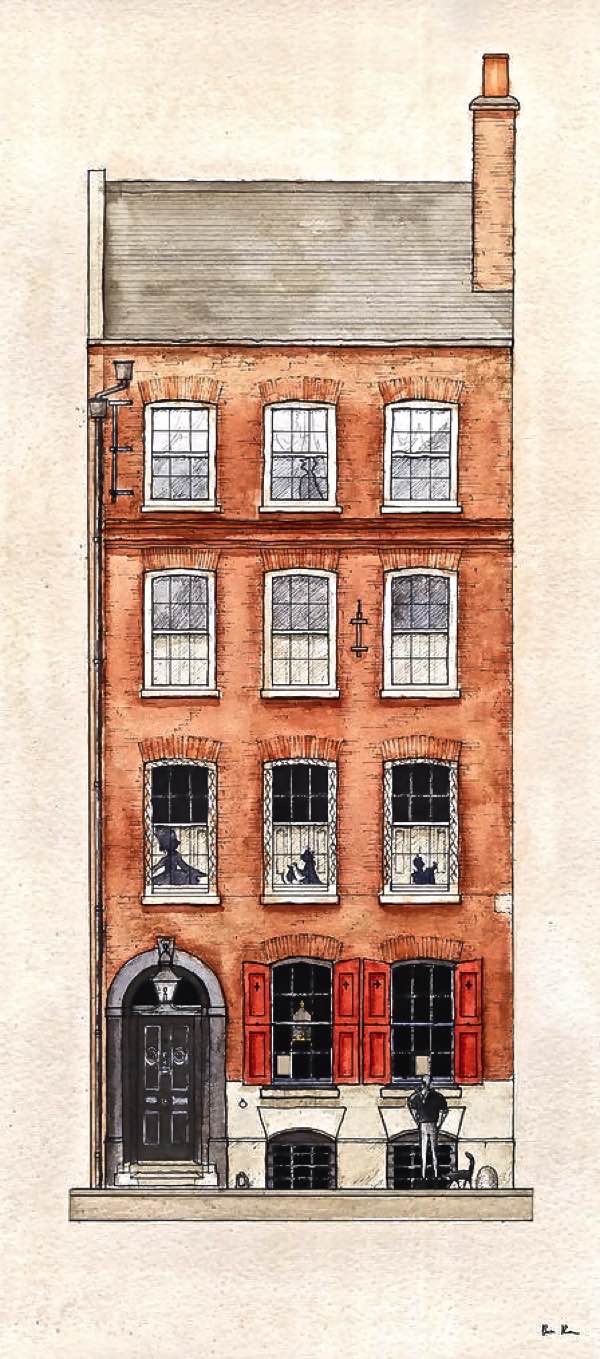It is my great pleasure to unveil this bravura collaboration between Adam Dant, Cartographer Extraordinaire & Jonathon Green, Lexicographer of Slang – ARGOTOPOLIS is a map of London slang organised around relevant locations in the capital. Click on Adam’s map to study it in detail and read Jonathan’s glossary below to learn more about the language. A limited edition of 50 hand-tinted prints is available from TAG Fine Arts.
![adam 15.6.15 Scan]()
The Old Oak: rhyming slang, The Smoke, i.e. London
KEY TO THE SLANG WORDS & PHRASES IN ARGOTOPOLIS
compiled by Jonathon Green
.
Nappy Valley (David Cameron’s House, Notting Hill)
Misses: Missus or Mrs
Armful: an affectionate spousal embrace
Bit o’ Tripe: possibly rhyming slang but possibly a ref. to the human body as a ‘piece of meat’
Burick: Romani burk, a breast or Scottish bure, a loose woman
Doner: Italian dona, a woman
Poker-breaker: the domineering wife’s ‘breaking’ of her husband’s poker, i.e. penis
’Pon My Life: rhyming slang, a wife
Rib: woman as ‘Adam’s rib’
Ankle-biter: a child who has yet to walk
Bin-Lid: rhyming slang, a kid
Gawdelpus: a child, lit. God help us
Chip: a child, i.e. a chip off the old block
Yuppie Puppy: the progeny of the young and upwards mobile; also trustafarian
Lully: a child, from little or lullaby
Swag: a shop
Buttiken: a shop, from French boutique + ken, a house or place
Drum: a house or home, either he image of the hollow drum resembling a hollow house or room or the use of drum, the road, as a figurative ‘house’ for itinerants.
Plate o’ Meat: rhyming slang, the street
Bricks: the city streets, especially as seen from a prison cell.
Stones: the streets of London, the open air
Carsey: a brothel, pub or lavatory, from Italian casa, a house
Crib: a house, a pub, a shop, a brothel, a cheap theatre, a bed, a safe, a cell, the vagina; all from standard crib, a narrow room
Gaff: a fair, a cheap theatre, a dancehall, a brothel, a prison, a house, a bar, a casino, a hotel; from Romani gav, a (market) town
.
Clobber (Selfridges, Oxford St)
Piccadilly Fringe: a popular women’s hairstyle in which the hair is cut short into a fringe and curled over the forehead
Piccadilly Weepers: long side whiskers, worn without a beard
Dittos: a suit of clothes (jacket, waistcoat, trousers) all the same colour
Bobtail: a dandy, from the wide skirts of his jackets
Gorger: a dandy, perhaps from gorgeous
Spiff: a dandy, from spiff, echoic of a sharp sound and thus figuratively exciting, important, astonishing
All Nations: a multi-coloured or heavily patched coat; from ‘the flags of all nations’.
Immensikoff: a large overcoat; coined by the music-hall star Arthur Lloyd who called himself Immensikoff and appeared on stage in such a coat to sing, c.1868, his hit ‘The Shoreditch Toff’
Spittleonian, a yellow silk handkerchief, manufactured in Spitalfields
Arse-Rugs: trousers
Sin-Hiders: trousers; they disguise the male genitals
Moab: a turban-shaped hat, worn by women; a jocular reference to Psalm 60: ‘Moab is my washpot’
Billycock: a style of man’s hat; perhaps a variation on bully-cocked, i.e. ‘cocked after the fashion of the bullies’ or pimps
Golgotha: a hat; pun on Greek golgotha, the place of skulls
Headlight, a large and ostentatious tie pin, usually a diamond one
Hopper-dockers / hock-dockies: shoes
Piccolo & Flute: rhyming slang, a suit.
Rig-Out: a costume; from nautical imagery: one’s clothes are one’s ‘rigging’
Cover-Me-Queerly: ragged clothing
Gropus: a pocket; one must grope into its depths to find small items
.
Yiddish (Sigmund Freud’s House, West Hampstead)
Goy: a gentile
Dreck: dirt
Fress: to eat
Kishkes: the intestines, the guts
Nudnik: a fool
Shpilkes: anxiety, nerves
Schnorrer: a beggar
Mozzle: luck
Plotz: to to lose emotional control
Bubbe Mayse: an old wife’s tale
.
Bogtrotters – Country Folk (Caravan, Outlying Rural London)
Carrot Muncher: the peasant’s staple diet
Clouted Shoon: lit. ‘a shoe tipped with iron and secured with iron nails’
Dog Booby: dog = male + booby = fool
Lob: dialect lob, a country bumpkin. Note Yiddish lobbes, a rascal and Dutch lobbes, a clown
Muck Savage: the idea that peasants are ‘savages’ living in filth
Nose Picker: a derogatory stereotype
Queer Cuffin: lit. ‘an odd bloke’
Sod Buster: the peasant’s agricultural labouring
Squab: SE squab, a raw, inexperienced person, also a young, unfledged bird or animal
Whopstraw: from whop, to hit; the work of threshing corn
.
Techies (Old St Roundabout)
Crapplet: a badly written or wholly useless app.
Angry Garden Salad: a poorly designed website GUI
Seagull Manager: (s)he flies in, craps all everything, then leaves
P.O.T.A.T.O.: “People Over Thirty Acting Twenty One’
Rasterbator: a designer who is obsessed with Photoshop
Salmon Day: a wasted day’s work: one has spent the entire day ‘swimming upstream’
Wall Humper: a person who, rather the removing the card from their pocket, raises their hip in an effort to swipe it against a reader
Open Your Kimono: to reveal one’s business plans
Grok: to understand fully, from Robert Heinlein’s scifi novel Stranger in a Strange Land
Ohnosecond: the fraction of time it takes to realize one has committed a major error
Chips and Salsa: chips refers to computer hardware, salsa to software
.
The Fancy – Boxing (York Hall, Bethnal Green)
Brother of the bunch of fives: a prize-fighter
Broughtonian : a prize-fighter; from Jack Broughton, inventor of the first prototype boxing glove, writer of ‘Broughton’s Rules’ (which lasted 1743–1838) and champion of England 1730–5
Bruiser: a prize-fighter
Whister-clister / Whister-poop: a blow to the ear
Clicker: a knock-out blow
Knight of the mawley: a prize-fighter, from mawley, a hand or fist
Fibbing-cull: a prize-fighter, from fib, to punch
Buckhorse: a blow to the ear
Jobber: a blow to the head
Smeller: the nose or a blow that hits it
Winker: a blow to the winkers, i.e. eyes
Slasher: a prize-fighter
Milling-kiddy: a prize-fighter, from mill, to fight
Breadbasketer or belly-go-firster : a blow to the stomach
Claret jug/ Claret cask / Claret-spout: the nose
.
Quackery (University College Hospital, Euston Square)
Nimgimmer: a surgeon or physician, esp. a specialist in venereal diseases
Knight of the Pisspot: a doctor, from the analysis of urine for medical purposes
Pintlesmith: a surgeon, lit. a ‘penis worker’
Crocus Pitcher: an itinerant quack doctor; also crocus (metallorum), a pun on croak, to die and crocus metallorum, oxysulphide of antimony
Twat Scourer: lit. the ‘cleaner of the vagina’
Flesh Tailor: a surgeon
Dr Drawfart: an itinerant quack doctor
Clyster Pipe: a doctor; lit. ‘a pipe used to administer clysters, or enemas’
Jollop, medicine, from jalap, a purgative drug obtained from the tuberous roots of Exogonium (Ipomoea) purga
Bone juggler: a surgeon
.
Argy-Bargy – Political Dissent (Marx Memorial Library, Clerkenwell)
Boodler: a corrupt politician, from boodle, bribes
Mud-pusher: a member of parliament, i.e. an M.P.
Quockerwodger: a politician who works for a patron rather than his/her constituents; lit. ‘a wooden puppet which can be made to ‘dance’ by pulling its strings
Lefty: a left-winger
Red: a radical; specifically a Bolshevik, a Communist; synonymous with communism since its birth in 1848
Rad / Raddie: a radical
Threepenny Masher: a young man who poses as a gentleman but lacks the savoir-faire, not to mention the funds.
Jack-Gentleman: a man of low birth or manners who has pretensions to be a gentleman, thus an insolent fellow, an upstart.
Macer: a swindler, from a possible link to mason, one who acquires goods fraudulently by giving a bill that they do not intend to honour
Swell Mobsman: a leading pickpocket, often undistinguishable from the smartly dressed people he robs
.
Nobs & Gentry (The Guildhall, City of London)
Gentry-cove: an aristocrat or gentleman
Swell cove: an aristocrat or gentleman
Snot: a gentleman, who is seen as snotty or arrogant
Tercel-gentle: a well-off knight or any rich gentleman, lit. a male falcon
Skyfarmer: a criminal beggar who tours the country posing as a gentleman farmer fallen on hard times, backed by suitably impressive, if counterfeit, papers
Queer Duke: an impoverished gentleman
Jagger: a (country) gentleman, from German Jäger, a sportsman
Rye mort / Rye mush: a gentleman or gentlewoman, from Romani rei a gentleman + mort, a woman or mush, a man
Nob / Nib: probably from nobility or nobleman
.
Hipsters (Tea Building, Shoreditch)
Amazeballs: wonderful
Bro Hug: a manly hug between two men who are friends
Cray: amazing, remarkable, lit. crazy
Humblebrag: self-deprecation actually used for self-aggrandizement
Throw shade: to talk negatively about a third party
Peeps: people
Rando: a random person or thing
That Wins the Internet: a general exclamation of satisfaction
Grill: the face
Rack: the female breasts
.
Americana (US Embassy, Grosvenor Sq)
Ham Shank: rhyming slang, a Yank or American
Man up: behave in a manly or macho manner
Grow a Pair: the pair are testicles, again one is encouraged towards a macho posture
Fanny Pack: a small satchel tied around one’s waist; from fanny, the buttocks
Heads-up: a warning, a briefing
Do the Math: work it out
Touch Base: to speak to
Septic: rhyming slang, a Septic Tank, a Yank or American
Can I Get…: rather than UK could I have
I’m Good: things are satisfactory, synonymous with UK response to ‘how are you’ of ‘very well thank you’
.
Park Life (Peter Pan Statue, Kensington Gardens)
Bumblebee: rhyming slang, a tree
Dr Green: the grass
Sleep with Mrs Green: to sleep in the open air
Ruffmans: a wood
Robin Hoods: rhyming slang, the woods
April Showers: rhyming slang, flowers
Eiffel Towers: rhyming slang, flowers
Skylark: rhyming slang, a park
Joan of Ark: rhyming slang, a park
Crackmans: a hedge
Lad: a fox
Charlie: a fox, pun on the politician Charles James Fox (1749–1806)
Bufe / Buffer: a dog, either echoic of a bark or from Welsh bwch, a buck, a male animal
Carpet-herb: grass
Old Iron and Brass: rhyming slang, the grass
Penny-a-Pound rhyming slang, the ground
.
Gambling (Crockfords Casino, Mayfair)
Blackleg: his black boots
Buttoner: that member of a gang who entices suckers to play in a crooked game; he buttonholes the victim
Topper-toodle: a gullible fool, esp. as prey to crooked gamblers
Thimble-Rigger: operator of a cheating game of ‘find-the-lady’ or the ‘three-card-trick’
Spieler: a casino, from Yiddish spiel, to play
Rump and a Dozen: the 18th century wager of a whole rumpsteak and a dozen bottles of claret
Punting-shop: a casino, from punt, to wager
Levanter: one who defaults on his debts, he lit. runs away to the Levant, i.e. the Middle East
Hazard-drum: a casino, from the game of hazard, a precursor of craps, and drum, a house
Grumble and Mutter: rhyming slang, a flutter
.
Whores (Soho Sq)
(All but one terms are simple synonyms for ‘ladies of the night’)
Frisker: from frisk, to have sexual intercourse
Cockatrice: in myth, a hybrid monster with head, wings and feet of a cock, terminating in a serpent with a barbed tai; such a monster can kill with a single glance
Ramp: from rampant, spirited
Trot: from trot, a hag, an old woman; she also ‘trots’ down the street
Trull: from German Trulle, a prostitute
Tib: supposedly a typical name for a working-class woman
Bluegown: prostitutes confined in a house of correction once wore a blue dress as their uniform
Circus Cowboy: a rent boy, who frequented the Piccadilly Circus ‘meat rack’
Covent Garden Nun: the popularity of Covent Garden as a centre of whoring
Quean: a specific use of a general term for a woman
Market Dame: the popularity of Covent Garden as a centre of whoring
Kate / Kittie: a generic use of the proper name
Miss Town: her role as a quintessentially urban figure
Town Miss: her role as a quintessentially urban figure
Miss o’ the Town: her role as a quintessentially urban figure
.
Old Jack Lang – Rhyming Slang (St Mary Le Bow, Cheapside, City of London)
Brixton Riot: a diet
Emma Freuds: haemorrhoids
Iron Hoof: a homosexual, i.e. a poof
Newington Butts: the stomach or guts
Queen Mum: the buttocks, i.e. the bum
Tony Blair: hair, a chair or a nightmare
Petticoat Lane: a pain
Charing Cross: a horse
Westminster Abbey: a cabbie
Alf Garnett: the hair, i.e. the barnet (fair)
.
Lucre ( The Bank of England, City of London)
Draft on the Pump at Aldgate: a fake bank-note or fraudulent bill; the Aldgate pump offered no financial security for a draft, i.e. a written order for the payment of money
Coriander (seed): a figurative use of seeds as form of growth and as such necessary for life; money has the same importance
Wedge: originally a wedge of silver
Readies: i.e. ready money
Scrilla: possible from a scroll, on which accounts were once kept
Sponds: fom Greek spondlikos, i.e. spondulics
Mazuma: from Yiddish, ultimately Hebrew mazuma, prepared, ready
Gelt: from Yiddish and German, gold
Dosh: from doss, to sleep or a bed; thus originally the money required to pay for one’s accommodation
Bread: the ‘staff of life’, as is money
.
Rookeries – New Office Blocks (1 Old St Mary’s Axe, City of London)
Can of Ham: 60-70 St Mary’s Axe
Armadillo: City Hall
Walkie-Talkie: 20 Fenchurch St
Cheesegrater: Leadenhall Building
Pringle: the Olympic Cycle Track
Helter-Skelter: the Pinnacle Tower
The Prawn: Willis Building
Stealth Bomber: 1 New Change
Gherkin / Wally: 30 St Mary Axe
Shard: 32 London Bridge Street
.
Toffs (Buckingham Palace)
NQOCD: Not Quite Our Class, Darling
NSIT: Not Safe in Taxis
PLU: People Like Us
MTF: Must Touch Flesh
SOHF: Sense of Humour Failure
Yonks: a long time
Jew canoe: a large car, often a Jaguar
Killing: uproariously amusing
Gucky: the fashion label Gucci
Cockers-p: a cocktail party
Chateaued: drunk, not necessarily on claret
Wrinklies: old people
Stiffie: an invitation
Brill: brilliant
.
Nosh (Covent Garden Market)
Ozzimangerum, soup made from a leg of beef; from ox + French manger, to eat
Princess Di: rhyming slang, a pie
Fourpenny Cannon: a steak and kidney pie; the cost plus its supposed resemblance to a cannonball
Bags of Mystery: sausages, the specific meat ingredient is not specified by the seller
Alderman in Chains: a roast turkey garlanded in sausages
Banger: a sausage, which may explode in the pan
Sharp’s Alley Bloodworms: beef sausages or black puddings, from Sharp’s Alley, an abattoir near the Smithfield meat market in London]
Darby Kelly: rhyming slang, the belly
Chamber of Horrors: sausages
Zeps in a Cloud: sausage and mash
Sanguinary James / Bloody Jemmy / One-eyed Joint: an uncooked sheep’s head
Poodle: a sausage, a pun on hot dog
Irish Apricots: potatoes, the stereotyped link of the Irish and the potato
Violets: spring onions or sage and onion stuffing
Horn Root: celery, it is supposedly aphrodisiac
Welsh Turkey: a leek, the stereotyped link of the Welsh and leeks
Rose: an orange, possibly the fruit also has a pleasant smell
Whitechapel: rhyming slang, an apple
Teddy Bear: rhyming slang, a pear
Snob’s duck, a baked sheep’s head (which is far cheaper than a real duck)
Thames Butter: completely rancid butter, the ‘South London Press …published a paragraph to the effect that a Frenchman was making butter out of Thames mud at Battersea. In truth this chemist was extracting yellow grease from Thames mud-worms’
.
The Uproar (Covent Garden Opera House)
Synagogue: a shed – its use is not specified – standing at that time in the northeast corner of Covent Garden, London.
The Straights: a network of alleyways and small courts in an area bounded by St Martin’s Lane, Half Moon Street and Chandos Street, the haunt of pimps, thugs and similar unsavoury characters.
Short’s Gardens: a state of temporary penury; a pun on the street Short’s Gardens in Covent Garden and short, impoverished
Mutton Walk: the saloon at the Drury Lane Theatre, Covent Garden; thus any street where one finds prostitutes, especially the junction of Coventry Street and Windmill Street in the West End.
The Finish / Carpenter’s Coffee Shop: Carpenter’s late-night coffee shop, sited in Covent Garden opposite Russell Street and ostensibly catering to the market porters, which closed only when the last customer had gone home into the dawn
Go Shop: the Queen’s Head tavern, Duke’s Court, Bow Street, London WC2.
The Lane: Petticoat Lane, Middlesex Street in the east End; Drury Lane, Covent Garden, in the West End
Break One’s Shins Against Covent Garden Rails:
Russian Coffee House: the Brown Bear public house in Bow Street, Covent Garden, a popular haunt for both thieves and thief-takers.
Tekram: backslang for Covent Garden market
.
Hoorays (Chelsea Town Hall)
Maybs: maybe
Blates: blatantly
Defo: definitely
Dorbs / Adorbs: adorable
Totes: totally
Soz: sorry
Probs: probably
Presh: precious
Obvs: obviously
OMG!: Oh my God!
.
Slicksters (Houses of Parliament, Westminster)
Craftsby: a cheat, a swindler
Swindling gloak: a swindler; gloak is synonymous with bloke, a fellow
Dunlop tyre: rhyming slang, a liar
Holy friar: rhyming slang, a liar
Cony-catcher: a confidence trickster, from cony, a rabbit, i.e. a sucker
Queer plunger: a confidence trickster who plunges into water and is saved from ‘drowning’; conveniently pre-assembled ‘rescuers’ then claim money for saving the person
Tweedler: a small-time confidence trickster; a stolen vehicle that is passed off a legitimate
Nuxyelper: a confidence trickster who fakes a fit in order to gain money from bystanders; from nux vomica, the fruit from which strychnine is produced, and which would induce vomiting
Jack-in-the-box: a street pedlar who specialises on con tricks
Shearer: a confidence trickster, who ‘shears’ the gullible ‘lamb’
.
The Law (Royal Courts of Justice, Fleet St)
China Street Pig: a Bow Street Runner
Thieves’ Kitchen: the Law Courts in the Strand
Theatre: a police, later magistrate’s court
Tenterden Park: the King’s Bench prison for debtors
Gentleman of the Three In(n)s : one who is in debt, in goal and in danger (of being hanged)
Fortune-teller / Conjuror: a judge, he ‘tells one’s future’
Ambidexter: a lawyer, he holds out both hands for bribes
Honest lawyer: a public house sign showing a headless man dressed in lawyer’s robes, the implication being that his honesty is only possible since, headless, he is bereft of the chance to speak.
.
God Box (St Paul’s Cathedral)
(All terms mean a clergyman, with an over-riding image of thumping the bible or pulpit)
Amen-Bawler
Bead Counter: the rosary beads
Smell-Smock: the clergyman’s alleged womanising
Mumble-Matin[s]
Black cattle: clergymen as a group
Soul Doctor / Soul Driver
Hum-Box Patterer: the hum-box is a pulpit
Cackletub: the tub is a pulpit
Good Book Thumper
Autem Cove / Pattering Cove: from autem, probably an altar, pattering, sermonising
.
Fur-men (Mansion House, City of London)
Bus-Bellied Ben: an alderman who ‘eats enough for ten’
City Bulldog: a constable
Lord Mayor: a large crowbar
Farmer: an alderman, from farm, to lease or let the proceeds or profits of customs, taxes etc. for a fixed payment
Alderman Lushington: a drunkard
Alderman’s Pace: a steady, careful pace, as befits an official with a fine sense of his own importance
Alderman Double Slang’d: a roast turkey garlanded with sausages
Recorder’s Nose: the rump of a chicken, duck, goose or other poultry.
City Wire: a fashionable woman; her use of wire to create elaborate hairstyles
Cit: a citizen, especially a merchant of the City of London
.
Brassic – Poverty (former Whitechapel Library, Aldgate East)
Pov / Povvo: an impoverished person.
Stig: a tramp or someone who resembles a tramp
Ding: a beggar, a tramp
Downrighter: a beggar, a tramp
Cursetor: a tramp or an impoverished lawyer
Fleabag: one who smells, usually a vagrant
Crank Cuffin: a tramp who poses as a sufferer from a sympathy-inducing illness
Abrahamer: a tramp, usually sporting picturesque rags to attract alms
Smelly Welly: a juvenile pejorative for a poor person who is seen as a tramp
Dosser: a tramp, a vagrant, a homeless person., from doss, to sleep (rough)
.
Cold Meat – Execution (Tower of London, Tower Hill)
Do the Newgate Frisk: from Newgate, outside public hangings took place from 1783-18688
Paddington Spectacles: the sack which is placed over the prisoner’s head prior to the hanging
Jig upon Nothing: the ‘dancing’ of the dying person’s feet as they choke to death
Climb the Leafless Tree: one of the many equations of the gallows with a ‘tree’
Have a Wry Mouth and Pissen Britches: a dry mouth and involuntary urination accompany one’s being hanged
City Stage: on which the guilty person ‘performs’
City Scales: the guilty man or woman is weighed off, i.e. sentenced and executed
Dance at Beilby’s Ball Where the Sheriff Pays the Fiddlers: the identity of Mr Beilby is unknown but a number of suggestions exist. [1] Beilby was a well-known sheriff; [2] Beilby is a mispronunciation of Old Bailey, the court in which so many villains were sentenced to death. [3] Beilby refers to the bilbo, a long iron bar, furnished with sliding shackles to confine the ankles of prisoners and a lock by which to fix one end of the bar to the floor or ground. Bilbo comes from the Spanish town of Bilbao, where these fetters were invented
Swing on Tyburn Tree: the Tyburn gallows at the west end of what would become Oxford Street, used for executions 1388–1783
Do the Paddington Frisk: Paddington was synonymous with Tyburn, original site of the main London gallows.
.
Terms for Places listed on the Tree Trunk
Alsatia: the 16th century ‘liberty’ south of Fleet Street, a law-free zone wherein crowded every fugitive villain
Black Mary’s Hole: a 17th century gay cruising ground in Clerkenwell, EC1
Cheape: Cheapside
Dilly: Piccadilly
Elephant; Elephant and Castle
Fleet: the river Fleet or Fleet Street
Garden: Covent Garden and its Market
Holy Land: the criminal rookery (i.e. slum) of St Giles (now the site of Centre Point)
In and Out; the Army & Navy Club, Piccadilly (from its doorposts which were thus painted)
Junction: Clapham Junction
Kangaroo Valley: Earl’s Court, once home of ex-patriate Australians
Lane: Petticoat Lane, focus of the Jewish East End
Mohocks: a gang of dissolute upper-class thugs, flourishing c. 1750
Newgate: London’s main prison, now the Central Criminal Court at the Old Bailey
Old Nask: Bridewell prison, Tothill Fields
Paddy’s Goose; a notoriously violent sailor’s pub on the Ratcliffe Highway
Queer Street: a figurative term for poverty
Recent Incision: the New Cut, Waterloo
Spittal: Spitalfields
Tyburn: London’s original execution ground, now Marble Arch
Up-West: the West End
Ville: Pentonville Prison, north London
Wanno: Wandsworth Prison, south London
X: Charing Cross
Yard: the police headquarters of Scotland Yard
Zoo: The Zoological Gardens, now London Zoo
![adam 15.6.15 Scan]()
Map copyright © Adam Dant
Text copyright © Jonathan Green
You may also like to take a look at
Jonathan Green’s Smithfield Slang
Adam Dant’s Map Of The Coffee Houses
The Meeting of the New & Old East End in Redchurch St
Redchurch St Rake’s Progress
Map of Hoxton Square
Hackney Treasure Map
Map of the History of Shoreditch
Map of Shoreditch in the Year 3000
Map of Shoreditch as New York
Map of Shoreditch as the Globe
Map of Shoreditch in Dreams
Map of the History of Clerkenwell
Map of the Journey to the Heart of the East End
Map of the History of Rotherhithe
Map of Industrious Shoreditch
Adam Dant’s Map of Walbrook

































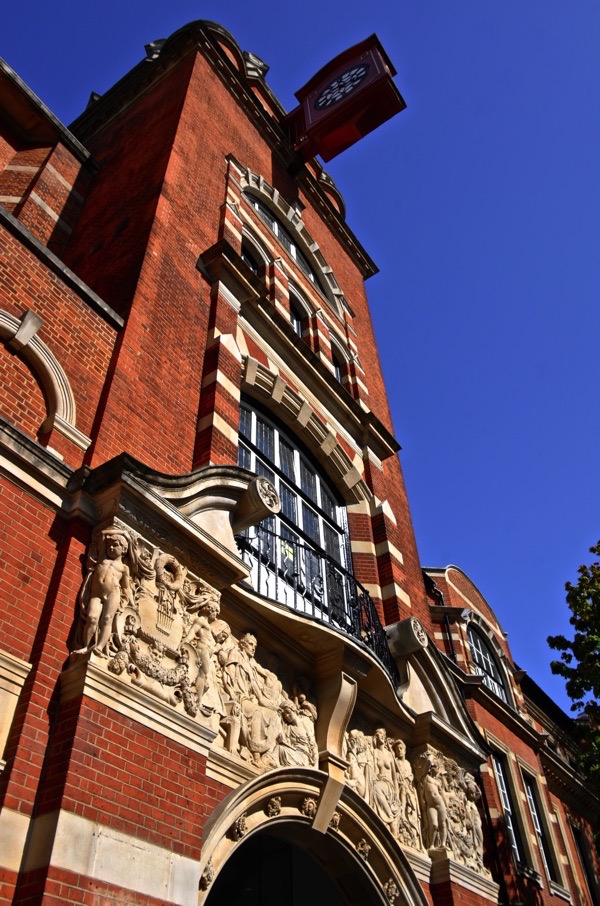









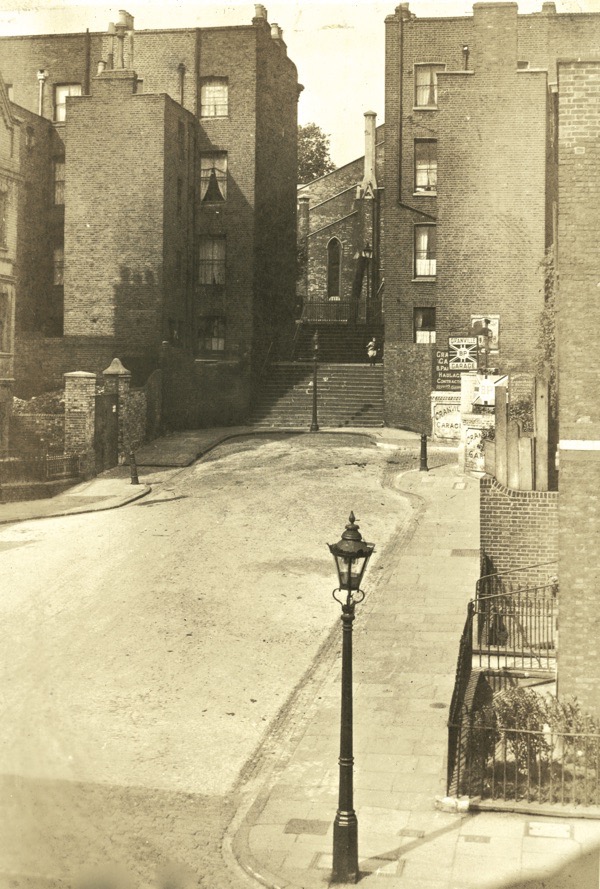



































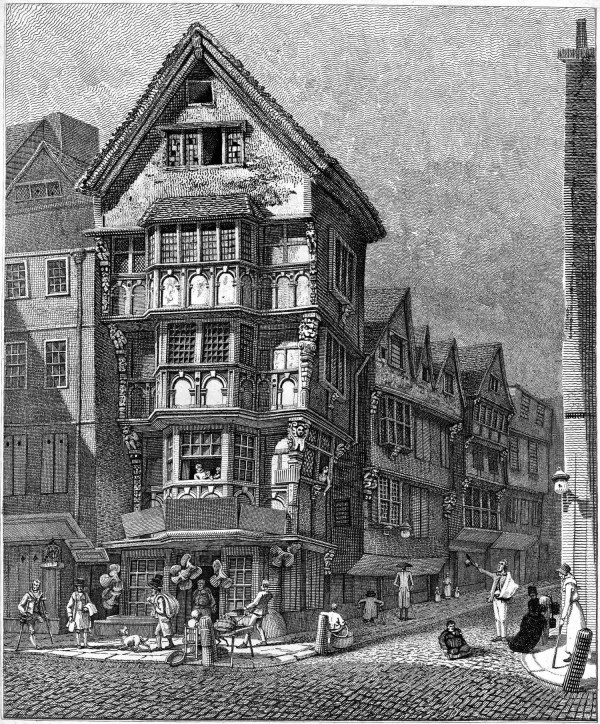


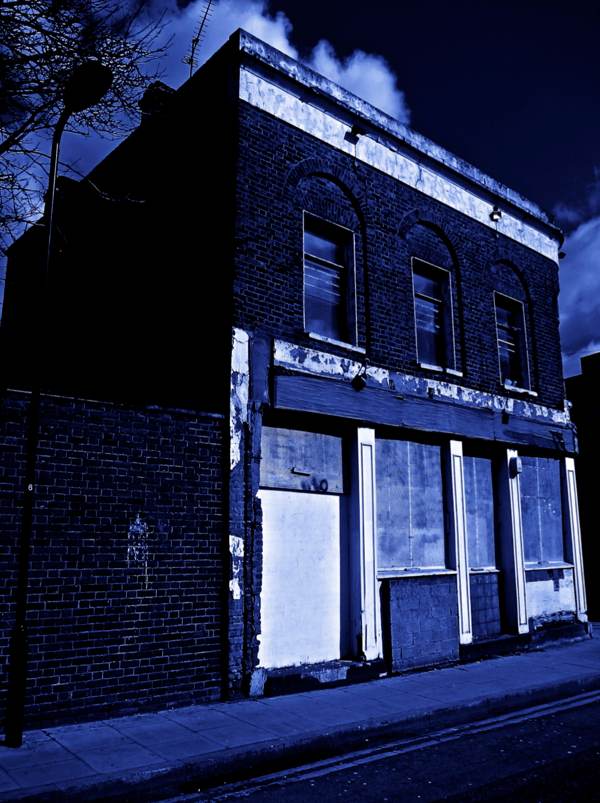

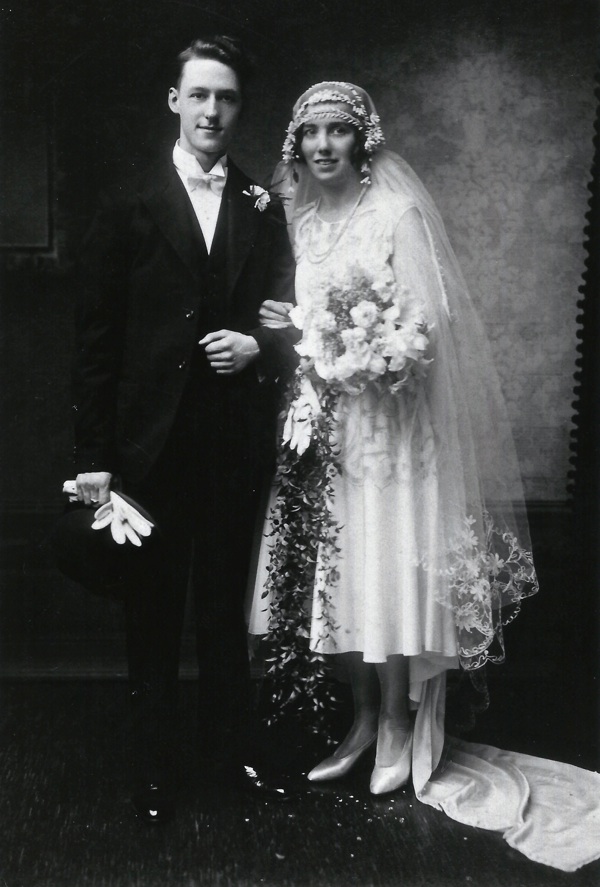
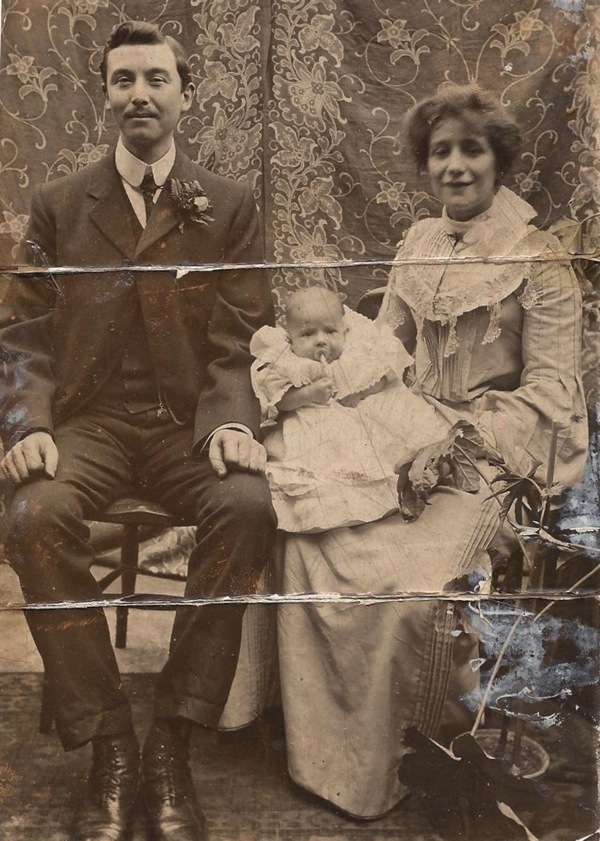
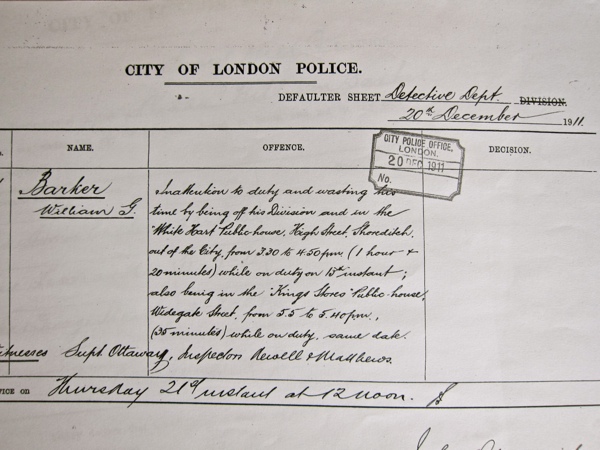
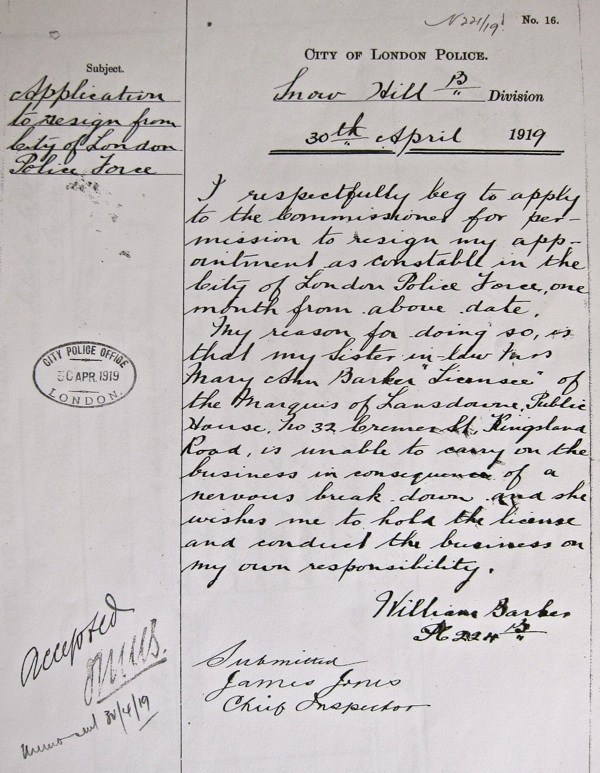
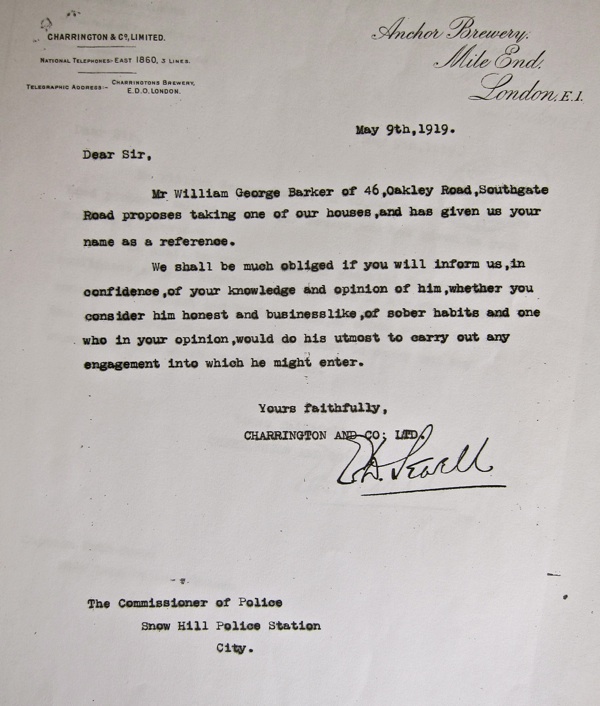

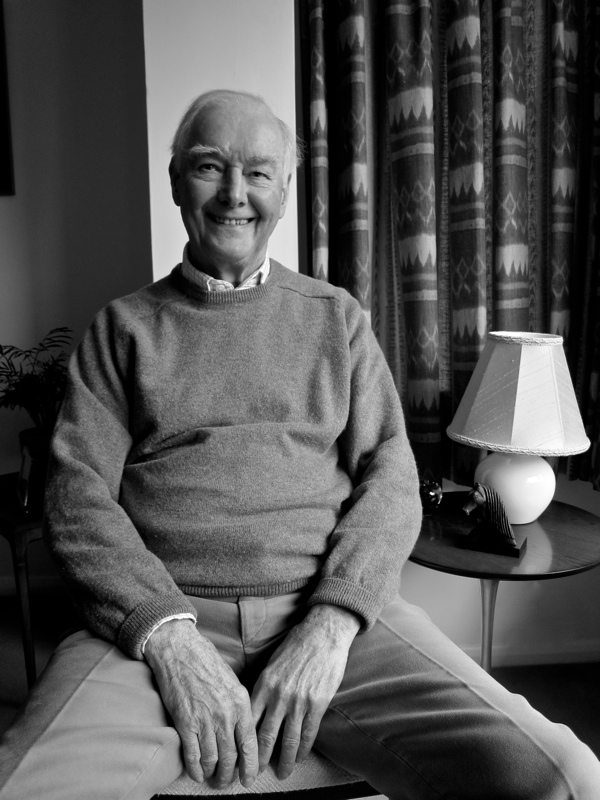



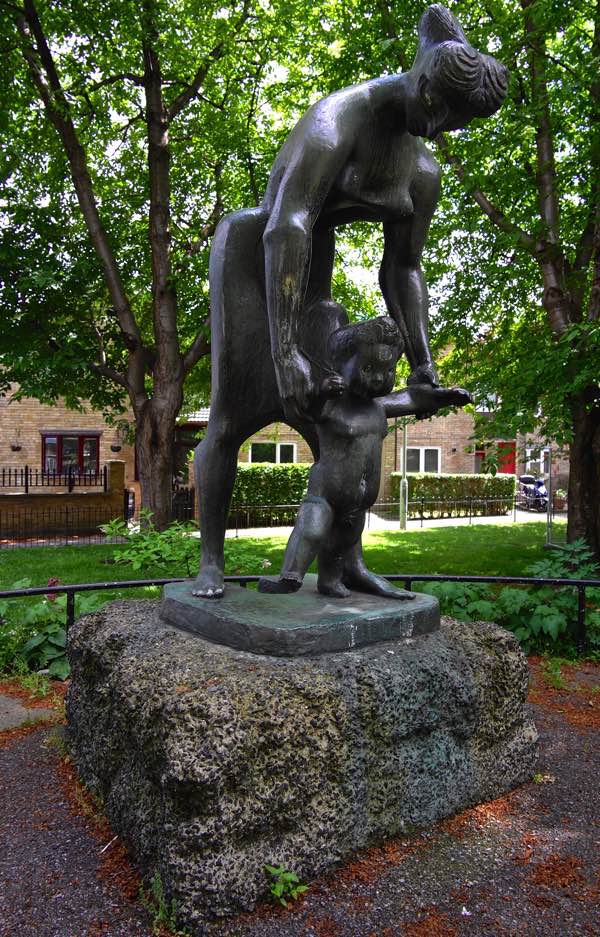


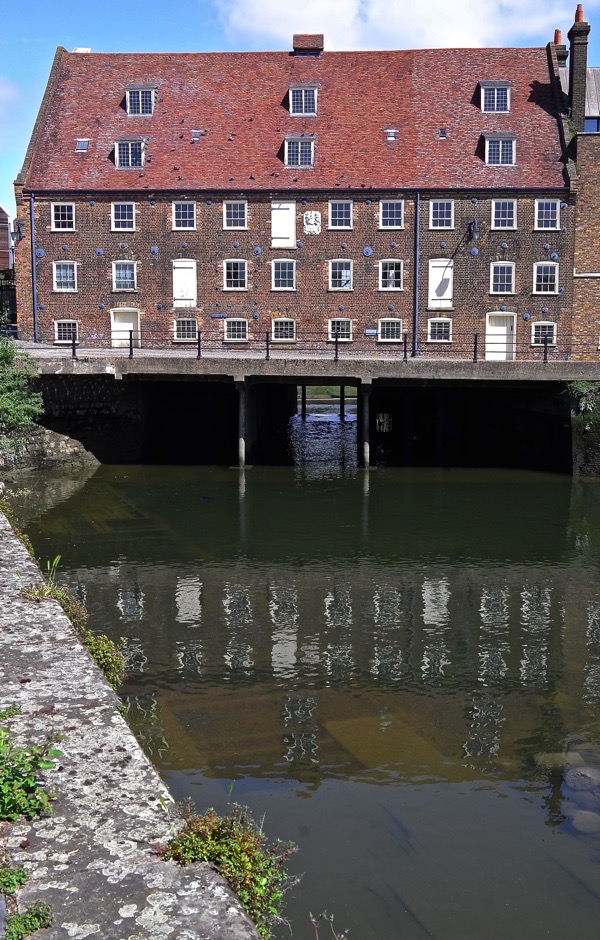















































 Windsor border trials
Windsor border trials














































































